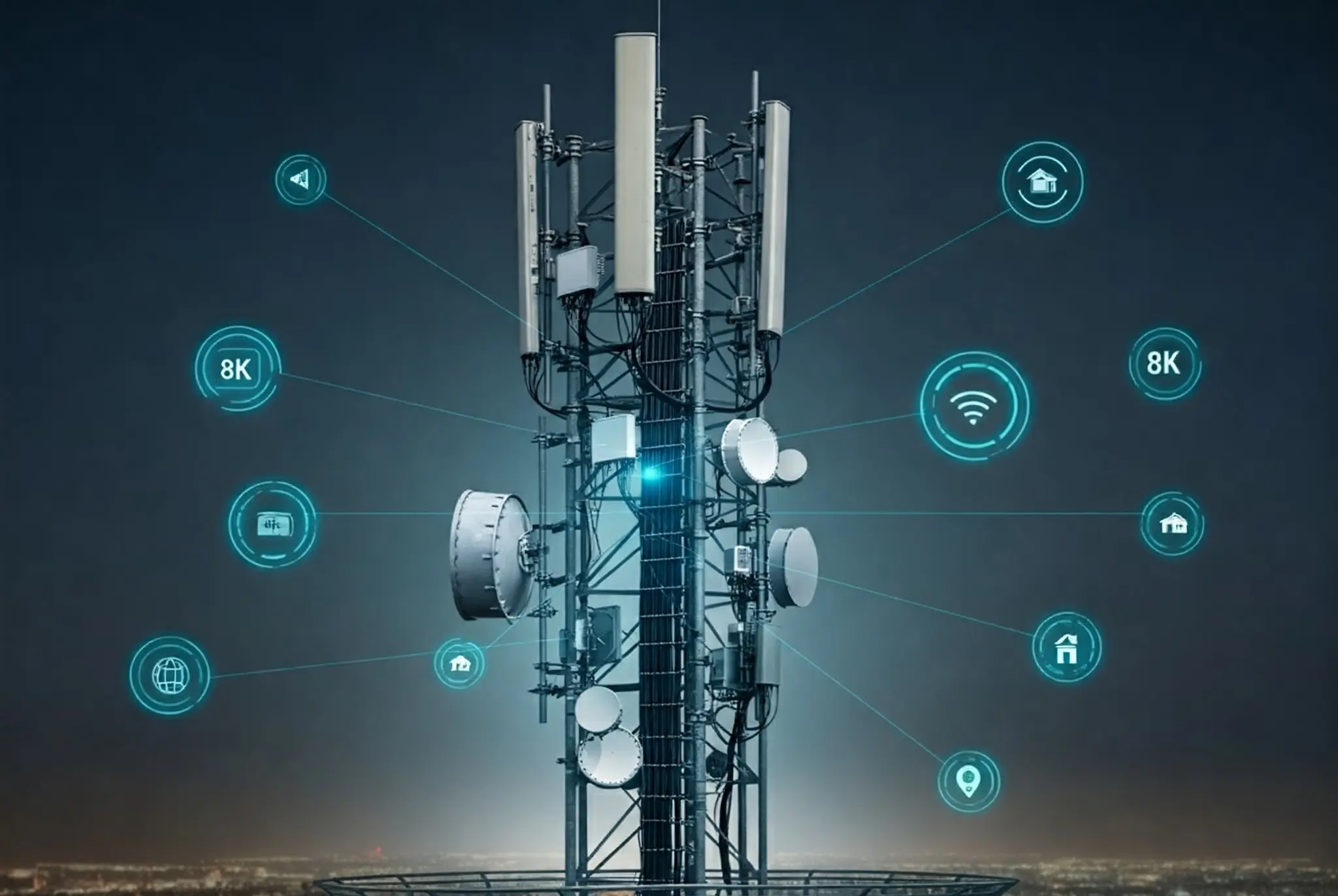The telecom industry is constantly evolving, driven by the insatiable demand for faster, more reliable connectivity. While fiber optic cables have long been the gold standard for high-speed data transmission, their deployment can be challenging and costly, especially in remote or geographically difficult areas. Enter WiFi 7, the next generation of wireless technology poised to revolutionize the industry and offer a viable alternative to fiber.
Understanding WiFi 7: A Leap Forward
WiFi 7, also known as IEEE 802.11be, is the latest iteration of the WiFi standard, promising significant improvements over its predecessors. Here’s a breakdown of its key features:
- Blazing Fast Speeds: WiFi 7 boasts theoretical speeds of up to 46 Gbps, a substantial jump from WiFi 6’s 9.6 Gbps. This incredible speed is achieved through wider channels, higher frequencies, and more efficient data encoding.
- Increased Capacity: With support for more simultaneous streams and improved multi-user MIMO (MU-MIMO) technology, WiFi 7 can handle a greater number of connected devices without sacrificing performance.
- Lower Latency: WiFi 7 incorporates several features to minimize latency, including improved scheduling algorithms and the introduction of preamble puncturing, which reduces overhead and allows for faster data transmission.
- Enhanced Reliability: Features like multi-link operation (MLO) enable devices to connect to multiple bands simultaneously, ensuring a more stable connection even in congested environments.
Bridging the Gap: WiFi 7 in Telecom
WiFi 7’s capabilities make it a game-changer for the telecom industry, particularly in scenarios where fiber deployment is impractical or cost-prohibitive. Here’s how:
- Fixed Wireless Access (FWA): WiFi 7 can deliver fiber-like speeds wirelessly, making it an ideal solution for providing broadband access to homes and businesses in underserved areas. This eliminates the need for costly and time-consuming fiber installations, accelerating broadband rollout and bridging the digital divide.
- Backhaul Connectivity: Telecom operators can leverage WiFi 7 to connect cell towers and other network infrastructure, providing high-capacity backhaul links without relying on expensive leased lines or fiber optic cables.
- Temporary Networks: WiFi 7’s ease of deployment makes it perfect for establishing temporary networks at events or disaster relief sites, providing rapid connectivity when it’s needed most.
- Private Networks: Businesses can utilize WiFi 7 to create high-performance private networks for their operations, ensuring seamless connectivity for critical applications and devices.
WiFi 7 vs. Microwaves: A Potential Replacement?
Microwave links have long been used in telecom for backhaul and point-to-point communication. However, they have limitations, including susceptibility to interference, limited bandwidth, and high costs. WiFi 7 presents a compelling alternative, offering several advantages:
- Higher Capacity: WiFi 7’s superior speeds and spectral efficiency provide significantly more bandwidth than traditional microwave links, supporting the growing demands of data-intensive applications.
- Lower Interference: WiFi 7 operates in unlicensed spectrum, reducing the risk of interference from other microwave systems. Additionally, advanced technologies like beamforming help to focus the signal and minimize interference.
- Cost-Effectiveness: WiFi 7 equipment is generally less expensive than microwave equipment, and deployment costs are lower due to the ease of installation.
- Scalability: WiFi 7 networks can be easily scaled to accommodate growing bandwidth needs, making them a future-proof solution for telecom operators.
Real-World Applications: Bodcomm’s Vision
At Bodcomm, we’re excited about the potential of WiFi 7 to transform the telecom landscape. We’re actively developing solutions that leverage this technology to address the challenges faced by our clients. Here are a few examples:
- Rural Broadband Deployment: We’re working with rural communities to deploy WiFi 7-based FWA networks, bringing high-speed internet access to homes and businesses that have been underserved by traditional broadband providers.
- Enhanced Mobile Backhaul: We’re partnering with mobile network operators to utilize WiFi 7 for backhaul connectivity, enabling them to expand their network capacity and improve service quality.
- Enterprise Wireless Solutions: We’re providing businesses with WiFi 7-powered private networks that offer secure, high-performance connectivity for their critical operations.
The Future is Wireless
WiFi 7 is not just an incremental upgrade; it’s a paradigm shift in wireless technology. Its exceptional speed, capacity, and reliability make it a compelling alternative to fiber in many telecom applications. As the technology matures and costs decrease, we can expect to see even wider adoption of WiFi 7, driving innovation and transforming the way we connect.
At Bodcomm, we’re committed to staying at the forefront of this wireless revolution, developing cutting-edge solutions that leverage the power of WiFi 7 to empower our clients and shape the future of the telecom industry.
